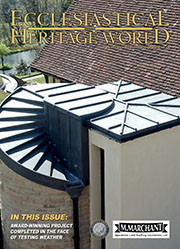In the midst of things – that’s the legacy of the East Midlands
 It is perhaps a little-known fact that the region in England we think of the as the loose conglomeration of the East Midlands actually has an official identity: it is one of the regions of the UK recognised by the EU as one of Europe’s Level One “nomenclatures d'unités territoriales statistiques”, or NUTS. Officially, the East Midlands comprises Derbyshire, Leicestershire, most of Lincolnshire, Northamptonshire, Nottinghamshire and Rutland.
It is perhaps a little-known fact that the region in England we think of the as the loose conglomeration of the East Midlands actually has an official identity: it is one of the regions of the UK recognised by the EU as one of Europe’s Level One “nomenclatures d'unités territoriales statistiques”, or NUTS. Officially, the East Midlands comprises Derbyshire, Leicestershire, most of Lincolnshire, Northamptonshire, Nottinghamshire and Rutland.
Historically, of course, the East Midlands region is much more than a device of the EU to find convenient parcels to divide Europe into. Many of England’s strategic decisions have been taken there – often on the battlefield, but also diplomatically. Richard III fell there – the last English king to lead his troops into battle.
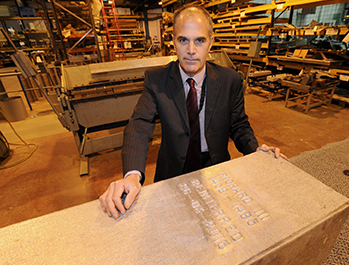 In fact, the lead lining to be placed inside the coffin of King Richard was created by Leicester firm Norman and Underwood and Dr Jon Castleman, chairman of the company, was the very last man to see the King as he welded shut the lead lid before his reinterment at Leicester Cathedral in March 2015.
In fact, the lead lining to be placed inside the coffin of King Richard was created by Leicester firm Norman and Underwood and Dr Jon Castleman, chairman of the company, was the very last man to see the King as he welded shut the lead lid before his reinterment at Leicester Cathedral in March 2015.
Jon (pictured) said at the time that it was an honour to be chosen to make the ossuary: “I have been at Norman and Underwood for 33 years and it is an honour for me to have that responsibility. This is special - something that is really good for Leicester and I am proud to be involved in it. I am pleased that Leicester has the skills to do this, both in the archaeology side and the skills we have as lead workers."
Cathedral spokeswoman Liz Hudson said: “Norman and Underwood have a long history of excellent and exacting work both in Leicestershire and around the world. They are without doubt experts in their field and we are delighted that they have been able to take part in this remarkable story on behalf of the University and the Cathedral.”
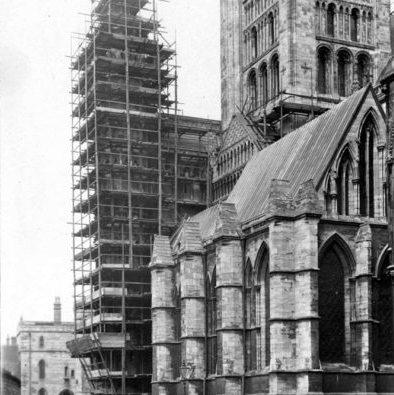 Ecclesiastically, the region rivalled any in the country with its ambitious building programme in the Middle Ages. For 250 years Lincoln Cathedral was recognised as the tallest building in the world, until its spire collapsed in a storm in 1549. The cathedral is currently involved in a long-term restoration project, including the north west turret and north west transept.
Ecclesiastically, the region rivalled any in the country with its ambitious building programme in the Middle Ages. For 250 years Lincoln Cathedral was recognised as the tallest building in the world, until its spire collapsed in a storm in 1549. The cathedral is currently involved in a long-term restoration project, including the north west turret and north west transept.
The five year project to restore both turrets, which frame the west front of the cathedral, is now into its third year. Work is currently underway on the screen wall and the blind tracery that connects the north west tower to the north west turret. The masons will spend a second winter working stone in the workshop for the lower levels (lift five down to the ground), for fixing on site in the spring.
The roofing work on the north west transept east elevation is a three year project in three phases. They are currently on the second phase, where the organ pipes have been removed and stored in the first phase of the roof work due to their proximity to the working area. The lead workers and joiners have prepared the site and made it watertight and internal hoardings at triforium level have been put in place to keep pigeons and dust out of the cathedral. For further information visit www.lincolncathedral.com
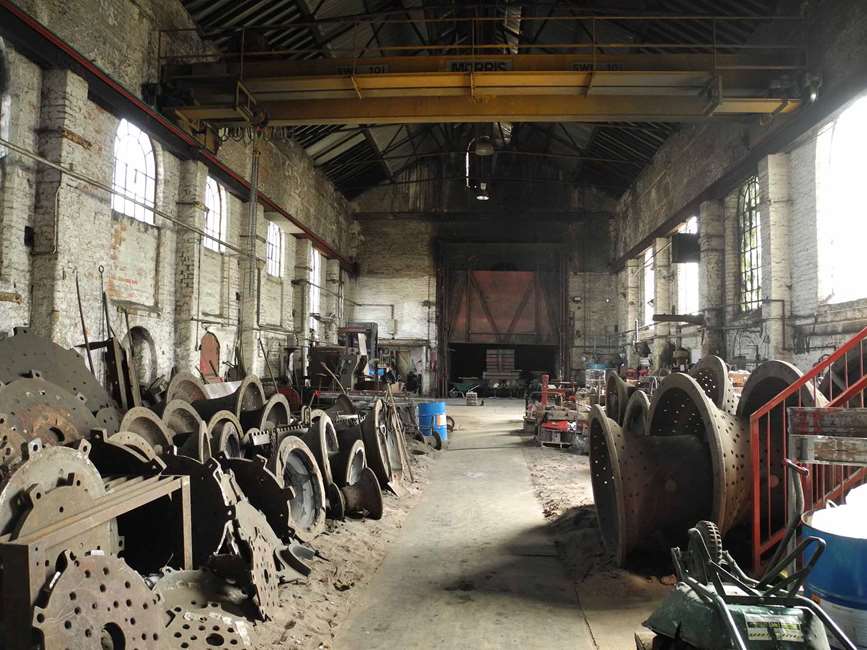
Loughborough Bell Foundry, foundry hall © Historic England
Other major ecclesiastical buildings in the region include the other two ‘Ls’ – Lichfield and Leicester cathedrals. There is a major surprise: between Mansfield and Newark in Nottinghamshire is Southwell Minster, a magnificent Norman cathedral that has been described as a “rose among flowers”.
With all that ecclesiastical history on the doorstep, it is no surprise that the world’s largest bell foundry is to be found in the region. The premises of John Taylor and Co in Loughborough – the only foundry in the country to be operated from its original, Grade Two*-listed premises – is undergoing a major restoration project.
The vital £640,000 repair project is funded by a grant from Historic England and the foundry is now on the organisation's Heritage at Risk Register.
Historic England worked with the foundry company to identify the most pressing repair needs, and then offered a grant for the extensive repairs to the roofs and rainwater dispersal.
The company’s director David Potter commented: "We are delighted to see a restoration programme started at last. The buildings have been terribly neglected for many years, and after the emergency repairs to the roofs and gutters are complete, we look forward to a water tight building for the first time in decades.
“Bell founding is thriving once more at Loughborough and our order book now stretches through to the end of 2017. Plans are well underway for a comprehensive restoration of the entire complex and with the help of Historic England and others we hope to see a new vibrant visitor attraction created in the coming years." For further information visit www.taylorbells.co.uk
Rare medieval shrine restored at Worksop Priory Gatehouse
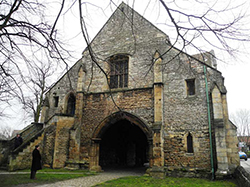 View of the northern elevation of the gatehouse and the walkthrough shrine
View of the northern elevation of the gatehouse and the walkthrough shrineOne of the finest medieval buildings on the East Midlands’ Heritage at Risk Register is being restored to its former glory. Worksop Priory was once one of Nottinghamshire’s wealthiest monastic houses. The Augustinian church and gatehouse survived the 16th century Dissolution of the Monasteries, together with part of the cloister wall. But by 1998 weather and decay were taking their toll, and the gatehouse and cloister wall were identified as buildings at risk.
Now repairs are under way to masonry, roofs and statuary. The work has been made possible by a condition survey and grants from Historic England and local authorities along with support from the Prince’s Regeneration Trust.
The gatehouse includes a feature which is thought to be one of only two survivors of its kind in England - a walkthrough shrine. It projects from the south elevation and includes a door on each side. As at the other surviving example in Canterbury, pilgrims would enter one side, kneel to pray before an altar, and leave on the other. Its roof has now been repaired and the exquisite vaulted ceiling and the decoration below have been restored. From Heritage Open Days in September 2016 the shrine will be occasionally open so that visitors can once more admire its intimate jewel-like interior.
These, and a number of other projects underway in the region, will be the subject of a major ‘spotlight’ feature in the next issue of Ecclesiastical and Heritage World. The feature will also showcase a number of notable heritage craftspeople working in the East Midlands.









